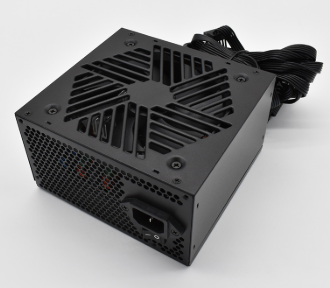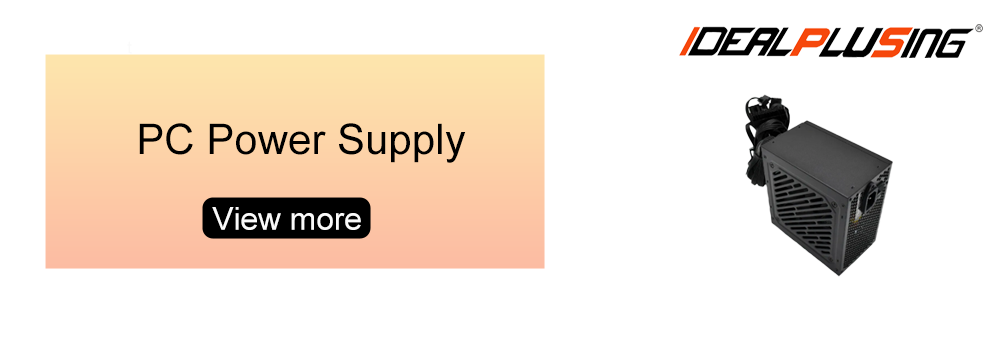When we talk about computer performance, we always mention GPU, CPU, and memory. But have you ever wondered who is delivering stable energy to these 'performance beasts'? It is the "heart" and "cornerstone of energy" of a computer - the PC power supply. So how to choose the right computer power supply? We will introduce the computer power supply itself and the selection guide, allowing you to understand the computer power supply and choose the one that satisfies you.
As the power core of a computer system, the computer power supply is responsible for converting AC power into DC power required by various components of the computer. Modern computers commonly use ATX standard switching power supplies, which have the characteristics of high efficiency and stable output. The ATX architecture and standards were proposed by Intel in 1995 to replace the AT architecture and achieve more modular PC design. This change greatly promoted the development of PC DIY culture, and to this day, ATX architecture is still the mainstream of PC systems.

Firstly, let's introduce the internal structure and technology of ATX power supply. ATX power supply belongs to switch mode power supply (SMPS), and its internal workflow is as follows: the first step is to reduce the voltage from the high voltage of AC power (such as 110V or 220V) to a low voltage through a transformer. After the transformer steps down, the current is still AC power, so it needs to be converted to DC power through a rectifier. The common rectifier is a diode, which only allows current to flow in one direction, eliminating the negative half cycle of AC power and converting it into unidirectional DC power. The EMI filtering circuit filters out high-frequency clutter and interference in the power grid, and prevents noise generated by the power supply from being fed back to the grid. Although the filter has stabilized the current to a certain extent, the voltage may still be affected by load changes. A voltage regulator ensures a stable voltage supply by adjusting the output of the current.
Alright, after briefly introducing the internal structure and working principle of computer power supplies, let's move on to the main content of this article: how to choose the right computer power supply and what precautions should be taken.
Power selection of power supply
When choosing a power source, the first thing to consider is the total power demand of the computer. The power of the power source refers to the maximum power output it can provide, usually measured in watts (W). Including motherboard CPU、 The power consumption of various components such as graphics cards and hard drives. The power required for common home office computers and regular gaming computers is generally between 500W and 650W, while high-performance workstations or gaming PCs may require 750W or higher power. Also, generally speaking, when we choose a power supply, its rated power should not be lower than the full load power consumption of our entire machine, and it is best to leave a margin of about 30% or 40%.
Power supply size
When choosing a computer power supply, size is also a factor to consider. ATX power supply is the absolute mainstream standard for current desktop computers, with the advantages of uniform specifications, extremely diverse choices, and due to its huge production volume, its cost is lower and its cost-effectiveness is very high under the same power and quality. Compared to ATX, SFX has a much smaller volume, which is its core advantage, specifically designed for compact ITX chassis. But this advantage also brings disadvantages: due to the more complex production process and smaller output, SFX power supplies are usually more expensive, and products of the same power will be much more expensive than ATX, and the selection of high-power models is also more limited. Therefore, unless your chassis can only accommodate SFX power supplies, choosing ATX power supplies is a more economical and widely available solution.
Efficiency and certification of power supply
An efficient power supply not only reduces energy waste, but also avoids overheating and extends the lifespan of the power supply. Power efficiency is generally measured through 80 Plus certification, which indicates that the efficiency of the power supply is at least 80% or higher. Common certification levels include 80 Plus white, Bronze, Silver, Gold, Platinum, and Titanium.

EMI protection
EMI is what we usually refer to as electromagnetic interference. With the increasing power of power supplies, the strong current in internal circuits will inevitably generate super strong electromagnetic interference. So a good host power supply also needs to shield these interferences. In order to shield interference and output stable power, EMI filtering circuits are required, and high-end power supplies also have secondary EMI circuits.
The computer power supply is not only the key to the stable operation of the PC, but the technological evolution and protective measures behind it also reflect the wisdom of computer hardware development. I believe that after reading this article, you have gained a certain understanding of how to choose a computer power supply. If you have any questions about this article or need to purchase our company's computer power supply products, please feel free to contact us. With the continuous advancement of technology, our ATX power supply will continue to provide DIY enthusiasts with safer, more stable, and efficient power supply solutions.








